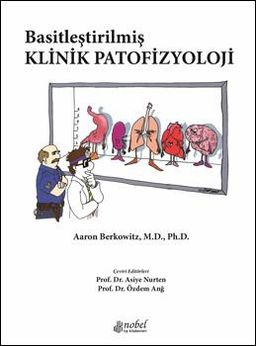Hakkında
Okurlar
9 okur okudu.
1 okur okuyacak.
Sözler ve Alıntılar
What happens when one vomits?
One loses lots of acid from the stomach. If vomiting causes acid loss, an alkalosis will remain behind in the serum. This is because H loss leaves behind an excess HCO3 eventually makes it to the kidneys, and thus the tubule lumen has more negatively charged ions than usual. One way of compensating for that is secreting the positive ion K into the lumen. So vomiting can lead to increased loss of K in the urine, resulting in hypokalemia.
Sayfa 64
Red cells from the kidneys can occur in glomerulonephritis; red cells from the lower urinary tract can occur with urinary tract infection, nephrolithiasis (stones), hemorrhagic cystitis, or bladder cancer. White cells from the kidneys can occur in acute interstitial nephritis; white cells from the lower urinary tract can occur from infection, cystitis and urethritis.
Sayfa 52
A worrisome outcome of hyperkalemia is cardiac dysfunction. On EKG, hyperkalemia first manifests as peaked T waves, and can lead to ventricular fibrillation, which can be fatal. Cardiac complications can be prevented with the administration of calcium (usually administered as calcium gluconate), which stabilizes the cardiac membrane. Mnemonic: imagine a peaked T wave as being peaked because it is a mountain of K.
Sayfa 63 - Calcium gluconate is also used in magnesium toxicity.
Insulin causes K entry into cells. A way to remember that insulin causes K to move into cells is simply to remember its action on glucose. Insulin causes glucose entry into cells. So just think of insulin as something that moves things into cells. Therefore, insulin deficiency or resistance can decrease the ability to move K into cells, resulting in hyperkalemia.
Sayfa 63
Tubulointerstitial disease can ve caused by drugs (antibiotics, chemotherapy agents), endogenous toxins (light chains in multiple myeloma), ischemia, immune processes (autoimmune diseases or transplant reaction), and/or infection (pyelonephritis).
Sayfa 50
İletiler
Henüz kayıt yok
Yorumlar ve İncelemeler
Henüz kayıt yok
